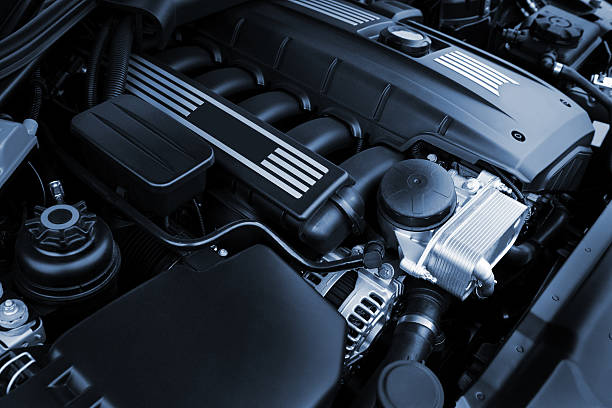The Untapped Potential of Hydraulic Hybrid Vehicles
In a world increasingly focused on sustainable transportation, hydraulic hybrid vehicles offer a unique and often overlooked solution. This innovative technology harnesses the power of fluid dynamics to revolutionize energy recovery and boost efficiency in ways that challenge conventional hybrid systems. As we explore the mechanics, benefits, and future prospects of hydraulic hybrids, we'll uncover a promising avenue for automotive evolution that could reshape our roads and our relationship with transportation.

The Mechanics Behind Hydraulic Hybrid Systems
At the heart of hydraulic hybrid technology lies a simple yet ingenious principle: the storage and release of energy through fluid compression. When a vehicle equipped with this system decelerates, instead of wasting energy as heat through traditional braking, it uses a pump to compress hydraulic fluid into a high-pressure accumulator. This stored energy can then be released to assist acceleration, significantly reducing the workload on the engine and improving fuel efficiency.
The system consists of several key components: a hydraulic pump/motor, accumulators for high and low-pressure fluid storage, and a power-split device that manages energy flow between the engine and the hydraulic system. This setup allows for various configurations, including series and parallel hybrids, each offering unique benefits depending on the vehicle’s intended use.
Advantages Over Traditional Electric Hybrids
While electric hybrids have dominated the eco-friendly vehicle market, hydraulic systems offer several distinct advantages in specific scenarios. One of the most significant benefits is the high power density of hydraulic accumulators, which can capture and release energy much more quickly than electric batteries. This makes hydraulic hybrids particularly effective for heavy-duty vehicles that frequently start and stop, such as garbage trucks or delivery vans.
Moreover, hydraulic systems are less sensitive to temperature fluctuations and have a longer operational lifespan compared to electric batteries. They also rely less on rare earth materials, potentially reducing manufacturing costs and environmental impact. These factors combine to make hydraulic hybrids an attractive option for fleets and industries looking to reduce fuel consumption and emissions without the limitations associated with electric powertrains.
Real-World Applications and Success Stories
The implementation of hydraulic hybrid technology has already shown promising results in various sectors. In the United States, several cities have incorporated hydraulic hybrid garbage trucks into their fleets, reporting fuel savings of up to 50% compared to conventional vehicles. These trucks not only consume less fuel but also experience reduced brake wear, leading to lower maintenance costs and extended vehicle lifespans.
Another success story comes from the delivery sector, where companies like UPS have tested hydraulic hybrid vehicles for urban routes. The results have been impressive, with significant reductions in fuel consumption and emissions, particularly in stop-and-go traffic conditions. These real-world applications demonstrate the technology’s potential to make a substantial impact on fuel efficiency and environmental sustainability in commercial transportation.
Challenges and Future Developments
Despite its advantages, hydraulic hybrid technology faces several challenges that have limited its widespread adoption. One of the primary hurdles is the system’s weight and complexity, which can be prohibitive for smaller passenger vehicles. Additionally, the technology is most effective in start-stop conditions, making it less suitable for highway driving where electric hybrids excel.
However, ongoing research and development are addressing these limitations. Engineers are working on more compact and lightweight hydraulic systems, as well as exploring ways to combine hydraulic and electric hybrid technologies to leverage the strengths of both. There’s also growing interest in using hydraulic hybrids in construction equipment and agricultural machinery, where the high power density can significantly enhance performance and efficiency.
The Road Ahead for Hydraulic Hybrid Vehicles
As the automotive industry continues to evolve in search of more sustainable transportation solutions, hydraulic hybrid technology remains a promising frontier. While it may not replace electric hybrids in the passenger car market, its potential in commercial and heavy-duty applications is undeniable. The technology offers a unique approach to energy recovery and efficiency that could play a crucial role in reducing the carbon footprint of sectors that have traditionally been difficult to electrify.
Looking to the future, we may see a diversification of hybrid technologies, with hydraulic systems finding their niche alongside electric and other alternative powertrains. This could lead to a more varied and adaptable fleet of vehicles, each optimized for its specific use case and environmental impact. As research progresses and more real-world data becomes available, hydraulic hybrid technology may yet prove to be a key player in the sustainable transportation revolution, offering a powerful tool in the fight against climate change and resource depletion.
In conclusion, while hydraulic hybrid vehicles may not be dominating headlines, their potential to transform certain sectors of transportation is significant. As we continue to seek innovative solutions to our energy and environmental challenges, this technology serves as a reminder that sometimes, the most promising advancements can come from unexpected places. The future of automotive technology is likely to be diverse, and hydraulic hybrids may well play an important role in shaping that future.





